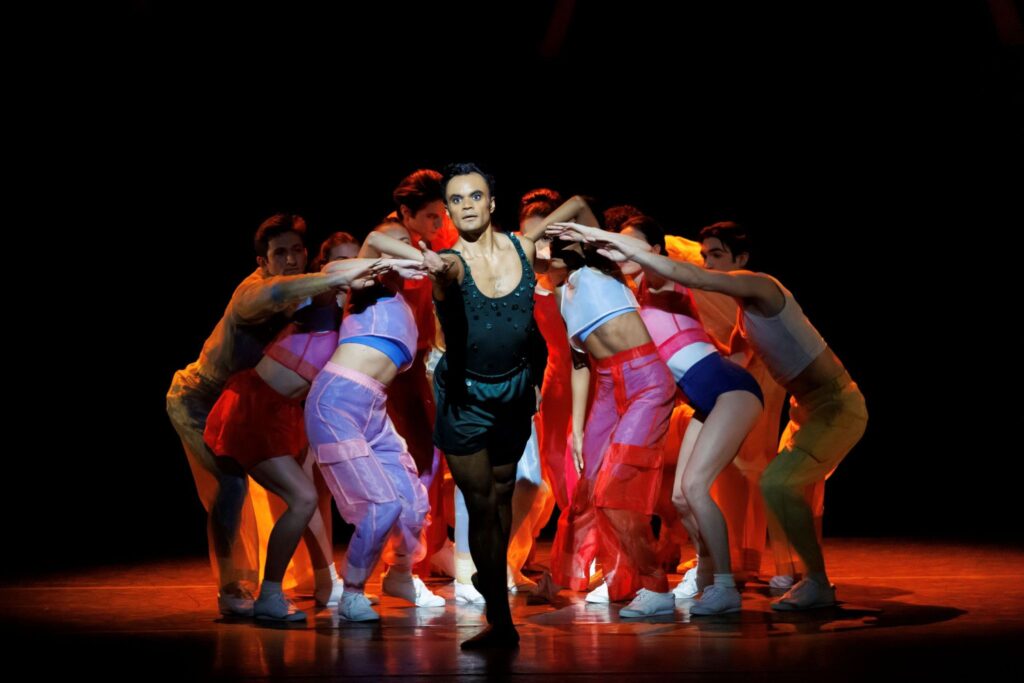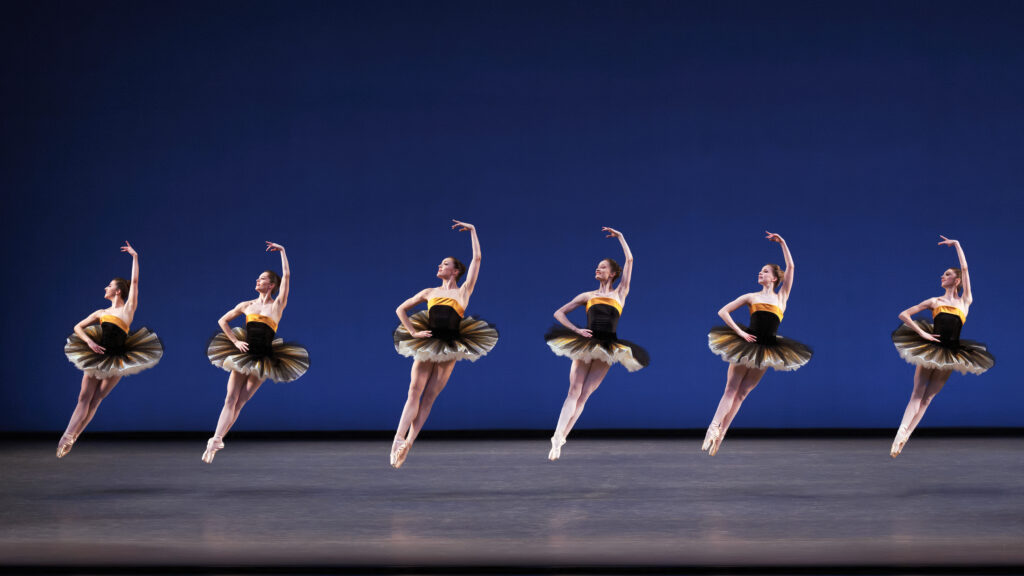VIEWPOINTS – Assessing New York City Ballet’s winter premieres: Justin Peck’s MYSTIC FAMILIAR and Alexei Ratmansky’s PAQUITA
- By drediman
- February 9, 2025
- No Comments
In all the ways that really matter, New York City Ballet’s winter season has been, thus far, exceptional. Indeed, the relatively young company has been firing on all cylinders over at the David H. Koch Theater, delivering performances that indicate impressive strides in style and performance ability. The season has been particularly notable for unveiling two new productions, which I delve into in more detail below.

JUSTIN PECK: MYSTIC FAMILIAR
First up is Justin Peck’s Mystic Familiar (RECOMMENDED), a highly anticipated company premiere which reunites the creative team behind the in-demand choreographer’s well-received The Times Are Racing. To be sure, their latest creation is a more ambitious project than that 2017 hit, starting with composer Dan Deacon’s score (inspired by the song “Become a Mountain”), which has been lushly orchestrated to take full advantage of the City Ballet Orchestra. Set against a striking and imposing New Age-style backdrop by visual artist Eamon Ore-Giron, Mystic Familiar is nothing less than a panoramic journey through evolution (at least that’s how I interpreted it), as charted by a progression of stylistically distinct segments. The highlight of the work transpires early on — an embryonic solo danced with soulful eloquence by the incomparable Taylor Stanley, who emerges from the murky primordial soup like a ravishing vision. From there, the piece explodes — jarringly — into the human freneticism of modern society. It’s here that the piece takes on a The Times Are Racing-redux quality, sneakers and all; the standout here was the dreamy but vibrant pairing of Tiler Peck and Gilbert Bolden III, who injected the segment with much needed distinctiveness. From here, the piece opens into a different and heightened kind of existence, one in which individuality seems to take a back seat to the collective (as suggested by Brandon Stirling Baker’s silhouette-heavy lighting design). Here, Peck seems to be taking a cue from Twyla Tharp’s In the Upper Room; even Deacon’s score takes a similar turn. Although I was a tad distracted by its slightly derivative quality, Mystic Familiar is nonetheless one of the choreographer’s stronger recent offerings — and a clear attempt at artistic daring.

ALEXEI RATMANSKY: PAQUITA
Then there was the premiere of Alexei Ratmansky’s production of Paquita (HIGHLY RECOMMENDED), a gorgeous new entry — and a definite keeper — that re-eimagines segments from Marius Petipa’s 1881 Paquita. As a sort of prologue to the main event, George Balanchine’s 1951 Minkus Pas de Trois commenced the piece, which was danced with sparkling buoyancy by Erica Pereira, Emma Von Enck, and David Gabriel. Then came Ratmansky’s restaging of the Grand Pas Classique from the Petipa ballet. Despite Ratmansky’s painstaking research to reconstruct the piece (which he also did for the Bavarian State Ballet about a decade ago), there’s something distinctly modern about the way the choreographer has re-assembled it for City Ballet. With a renewed focus on line, he presents each choreographic element with clarity, as if at each moment re-assessing their intention, particularly within City Ballet’s aesthetic, which emphasizes agility and power. I’m happy to report that Saturday night’s performance found the company — particularly the women in the ballet — truly gelling and dancing with emphatic virtuosity. Many of them found their moment to shine in their respective variation, particularly Indiana Woodward, Unity Phelan, and Emily Kikta — each of whom performed with breathtaking confidence and distinctive stylishness. I attribute these shining moments to Ratmansky’s close collaboration with his dancers, who seem to be blooming under his guidance. Dancing the principal role at the performance I attended was star principal Mira Nadon, and she was simply astonishing in her grandeur and musicality. As her partner, Joseph Gordon, although slightly mis-matched, more than held up his own, providing solid partnering despite still searching for the expansiveness within the part.

 Copyright © 2025
Copyright © 2025
Leave a Reply